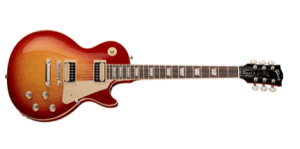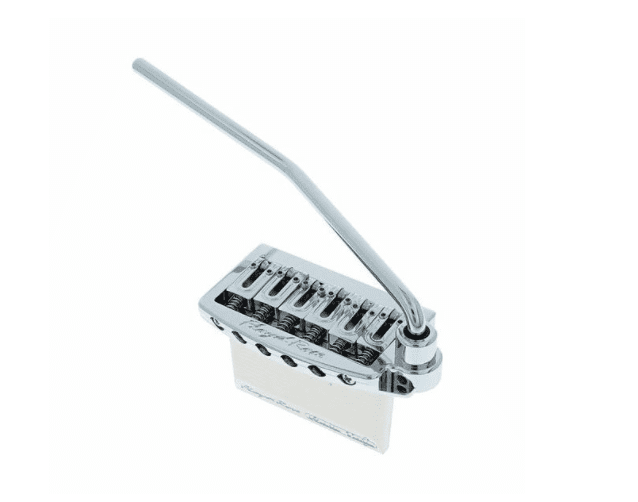
There have always been musical inventions and visionary pioneers of their musical discipline that have left their audiences in awe Technical innovations have repeatedly opened up new creative possibilities for musicians and producers. Listing every single milestone would probably fill entire encyclopaedias of music history so this is definitely not all. These special cornerstones had an interesting influence on everything that was to come later on!
1. Les Paul: inventor of the electric guitar and pioneer in recording technology
Les Paul is particularly known for inventing the world-famous Gibson Les Paul, which is still one of the most played guitars par excellence. However, his influence as a pioneer in the field of recording technology sometimes fades into the background. It was and is immense. Les Paul was one of the first to deal with multi-tracking recording. He was by no means the first to use the overdub technique, but together with his partner Mary Ford he was the one who created the decisive popularity.
2. The Who: Initial spark for Jim Marshall
Jim Marshall has long since become a legend in the construction of guitar and bass amplifiers. The amps have populated the stages with their powerful sound for decades. Interestingly, the actual starting gun for the development of Marshall tube amps came from The Who, or more precisely from Pete Townsend. He really wanted an aggressive, distorted sound and he wanted more volume. At the end of 1962, Marshall brought the “Number One” onto the market; it was the first Marshall JTM45 ever made. For Townsend & Co. he produced the Super 100 Head, the first 100W top unit, and also the 8×12” Speaker Cabinet. Pressure for the big stages of the world.
3. Invention of the first fuzz pedals
The special sound of fuzz pedals has shaped various music genres and generations of musicians. The fuzz polarises opinions: it is loved and hated. For many guitar players, it is an indispensable sound component. In the favour of electric guitarists, it has experienced constant ups and downs. Born as the first genre of distortion pedals in the 60s, it seemed to sink into oblivion in the 80s. Then came grunge and ensured a renewed triumph. The rest is recent history. The first fuzz was the Maestro FZ-1 Fuzz by Gibson in 1962.
4. George Martin producing the Beatles
The extraordinary influence producers can have on music was impressively demonstrated by George Martin as producer of the Beatles. As the gentleman behind the geniuses, he made the mushroom heads world famous. With albums like “Sgt. Pepper’s Lonely Hearts Club Band” at the latest, George Martin revolutionised recording technology and sound design, becoming both arranger and supplier of ideas in addition to his role as producer. He was responsible for the change to the four-track technique and very special overdubs. If there was a fifth Beatle, it was George Martin.
5. Queen release first music video to promote song
In 1975, Queen released the music video for Bohemian Rhapsody to promote the song of the same name written by Freddie Mercury. The song was released from the album “A Night at the Opera”. It sold more than five million copies and became Queen’s first number 1 hit. The video is considered the first pop video to underpin the sales success of a single. In July 2019, the video broke a mega-mark: one billion views on YouTube!
You are currently viewing a placeholder content from Youtube. To access the actual content, click the button below. Please note that doing so will share data with third-party providers.
6. Invention of the Floyd Rose – whammy hook for string acrobats
From 1977, a more than clever invention revolutionised the electric guitar world. The Floyd Rose guitar vibrato system saw the light of day. The eponymous inventor and guitarist Floyd D. Rose, who was active in bands in the Seattle area, designed the system in response to his annoyance that conventional tremolos could not keep the strings in tune. The so-called double-locking system was born. The world without the Floyd Rose would’ve been a boring world without guitar heroes and awesome dive bombs..
7. The fine art of finger tapping
For a certain Eddie Van Halen, too, the Floyd Rose was just right for his style-defining finger tapping. He took the tapping technique to a level that had never been heard before. At times, one might’ve had the feeling that his entire, whacky guitar playing consisted exclusively of tricks, which he interwove into an artfully rocking overall mesh. He was by no means the only guitar icon to draw from the magical tapping well, but he was one of the most influential pioneers of the technique. Suddenly, guitarists were seen copying his tricks on all stages and in every shop.
8. Black Sabbath as pioneers of heavy metal and doom metal
Heavy metal and doom metal would not have developed without Black Sabbath. The band around the warhorses Ozzy Osbourne and Tony Iommi were definitely the co-founders of these heavy genres in the 70s. They wanted to make music that listeners were afraid of. Their album “Paranoid” became an unforgotten classic, whereby the title already gave striking information about the rude everyday life of the band. It was pure musical rebellion; unadjusted, loud and punchy to the point. And no, Ozzy didn’t bite the bat’s head off. Or did he?
You are currently viewing a placeholder content from Youtube. To access the actual content, click the button below. Please note that doing so will share data with third-party providers.
9. Franz Zappas’ epochal influence on rock music
One person who is mentioned far too rarely, despite his genius and incredible influence, is Frank Zappa. This may have to do with the fact that throughout his life he never wanted to be taken in, and that his music was sometimes difficult to digest for normal listeners because of its complexity. He did not allow himself to be dissuaded. He was the personified master of crossover par excellence. Zappa combined rock elements with classical influences and jazzy collages. He was a multi-instrumentalist, singer, producer and an undisputed icon of his time. Frank Zappa experimented with many instruments that are rarely or never used in rock bands. And he played in time signatures that others couldn’t even count.
More turning points in music history can be found by clicking on this link (Part 1).!
Feedback
We have already received interesting feedback from you on Part I of this article series with tips worth mentioning. We thank you very much and, as you can see, we are happy to respond. Of course, we look forward to receiving further comments from you!😉
One comment
Leave a Reply
You are currently viewing a placeholder content from Facebook. To access the actual content, click the button below. Please note that doing so will share data with third-party providers.
More InformationYou are currently viewing a placeholder content from Instagram. To access the actual content, click the button below. Please note that doing so will share data with third-party providers.
More InformationYou are currently viewing a placeholder content from X. To access the actual content, click the button below. Please note that doing so will share data with third-party providers.
More Information









Peter gleave says:
‘Franz’ zappa?
Frank ferdinand??
Also the Queen releasing the first music video is bullshit.
Beatles
Paperback writer 1966
Beatles strawberry fields 1967
Beatles
Penny Lane 1967
Beatles
Day in the life
Hey jude
Hey bulldog
All videos that pre dates Queen
Although….the Beatles were a little known cult band so you can be forgiven for such an omission.
Car crash of an article.